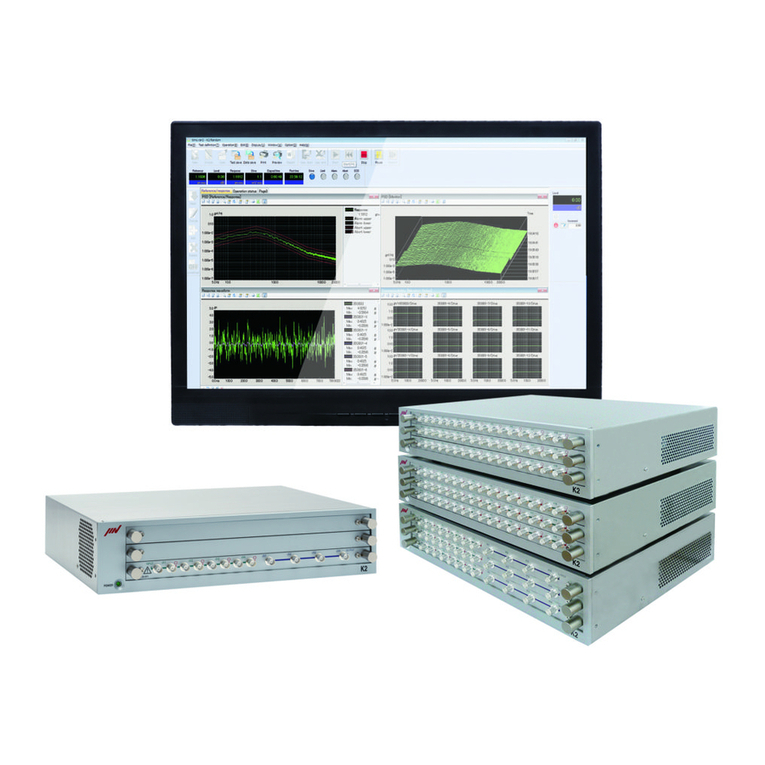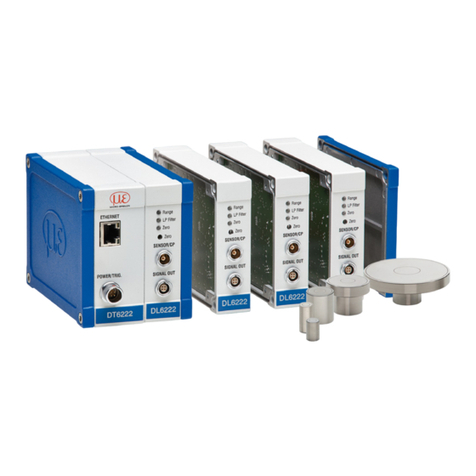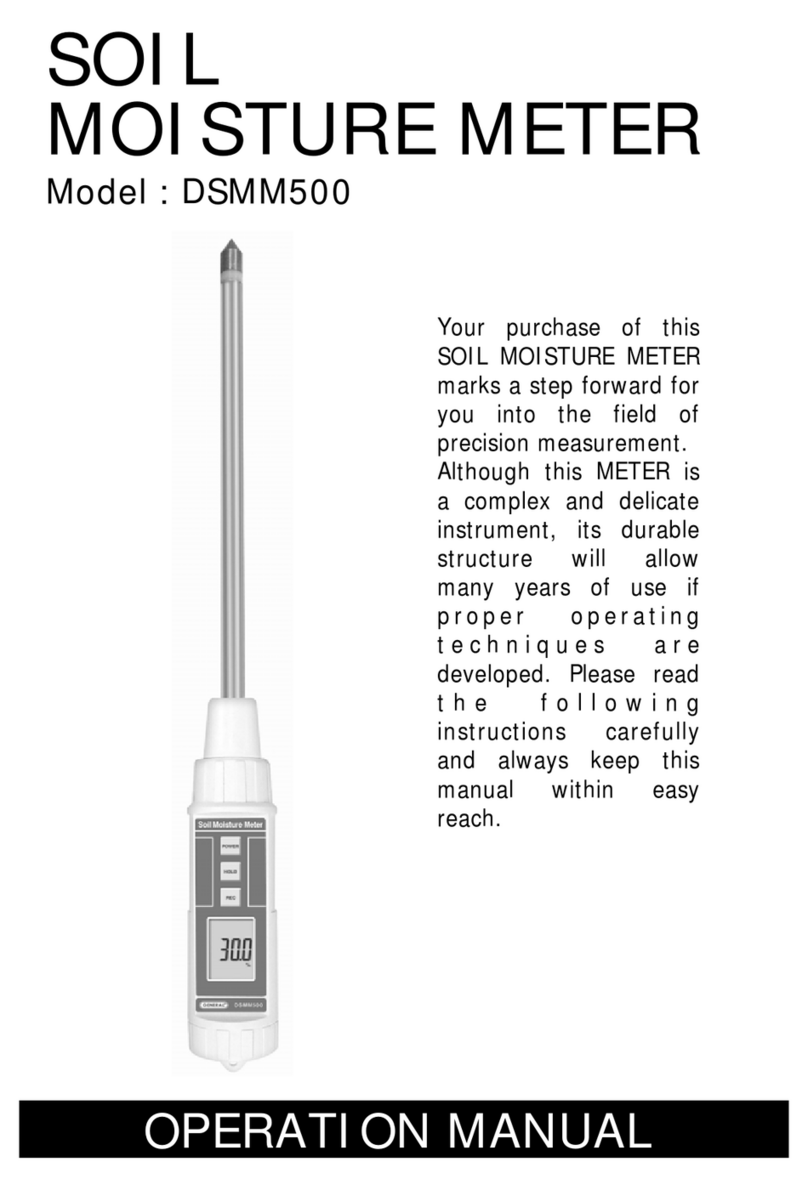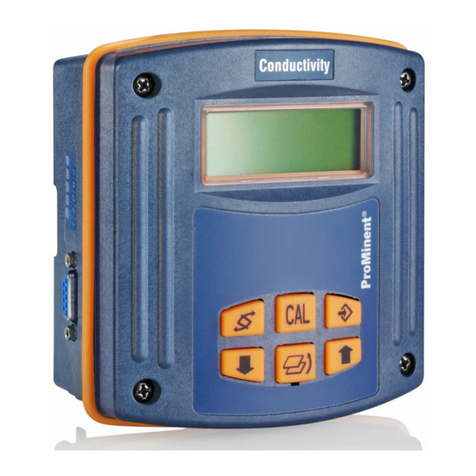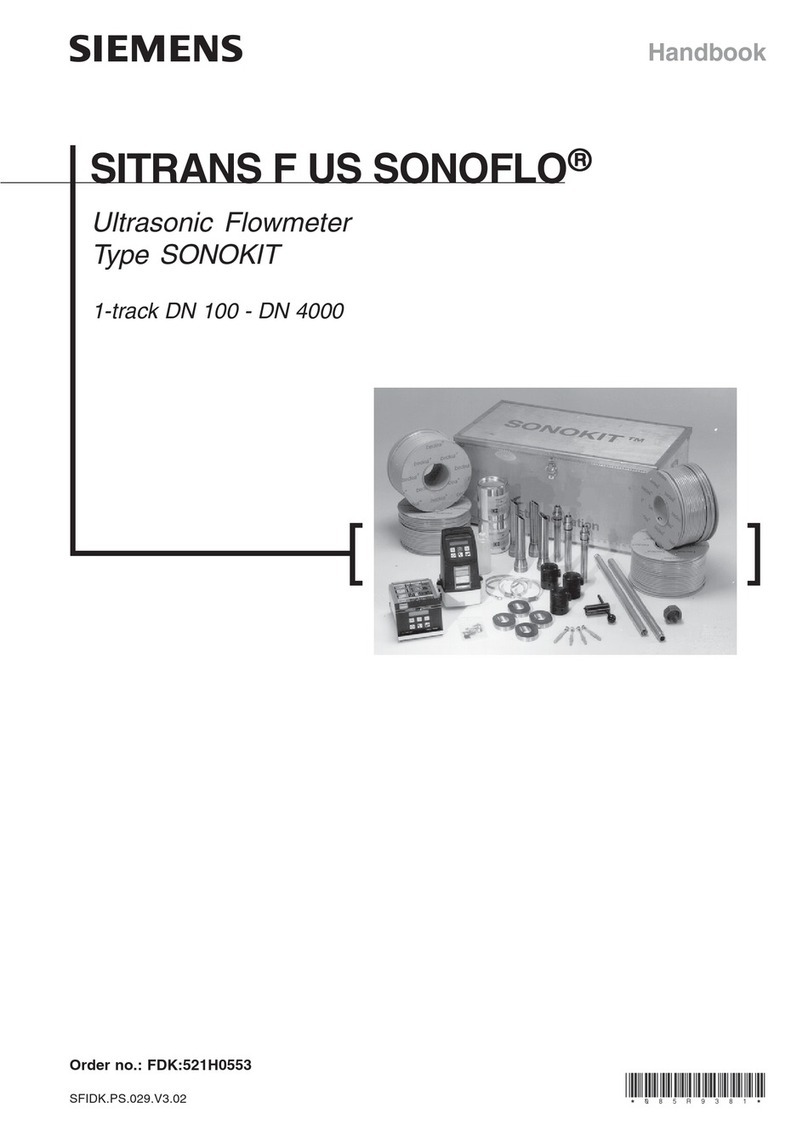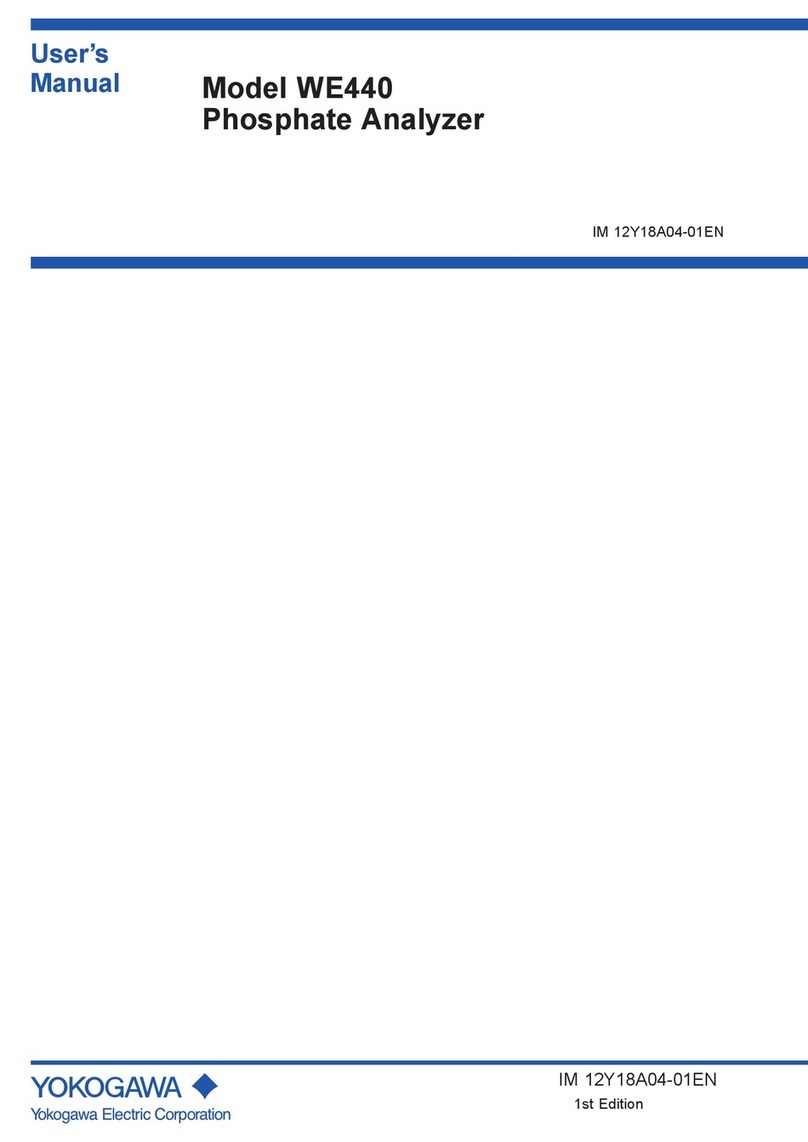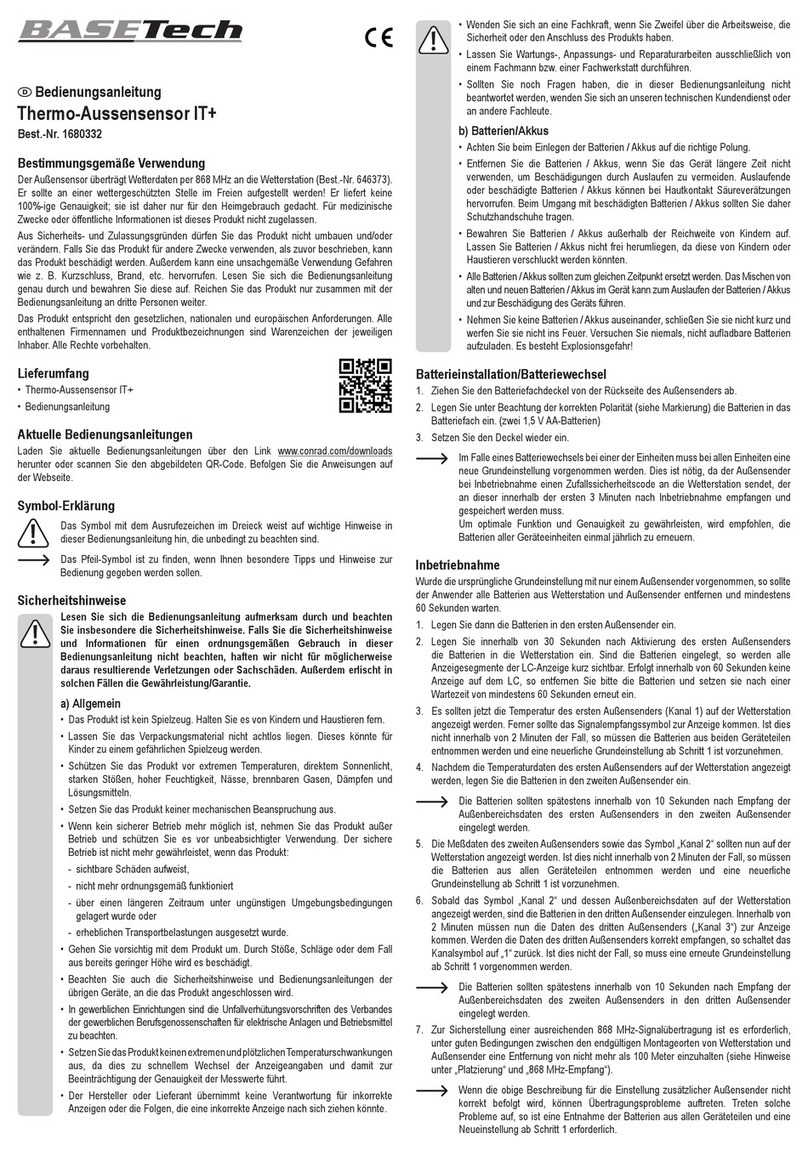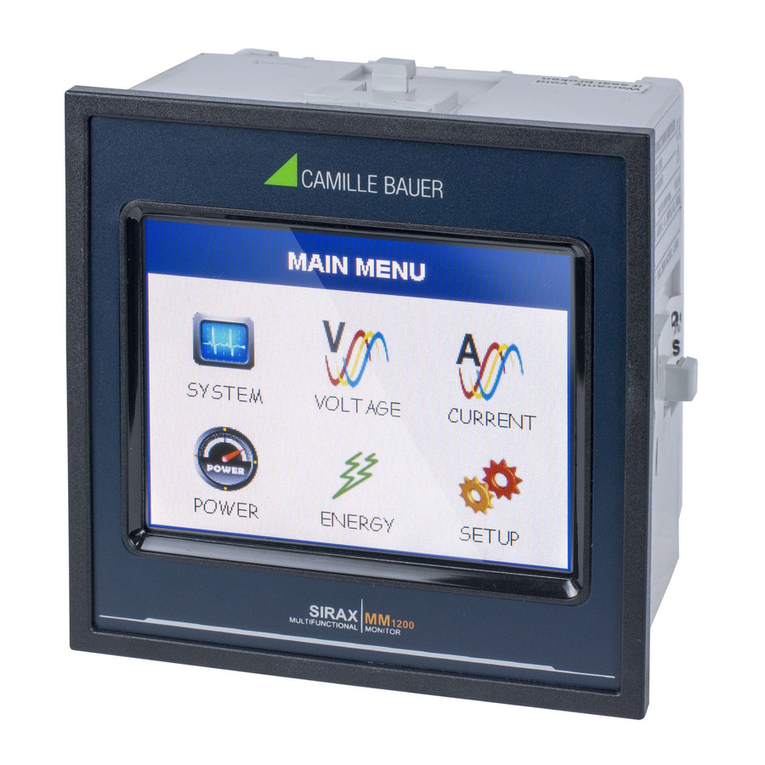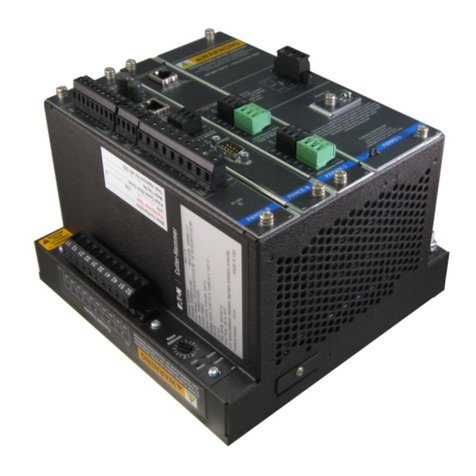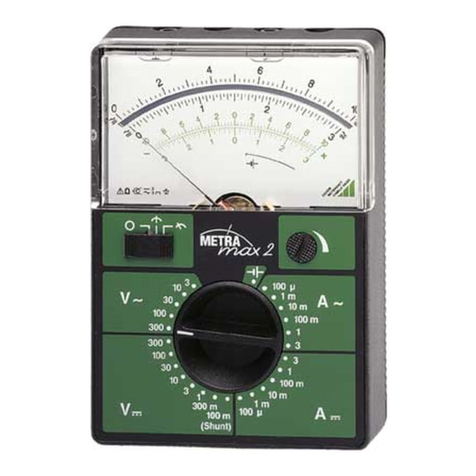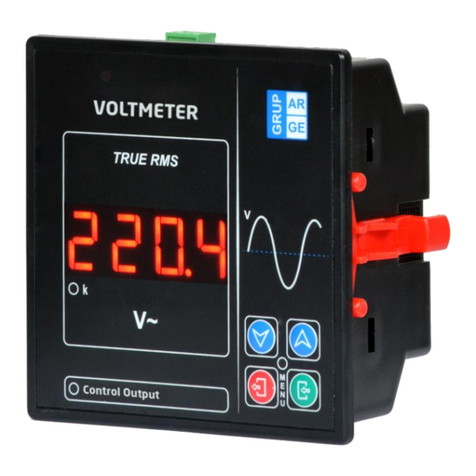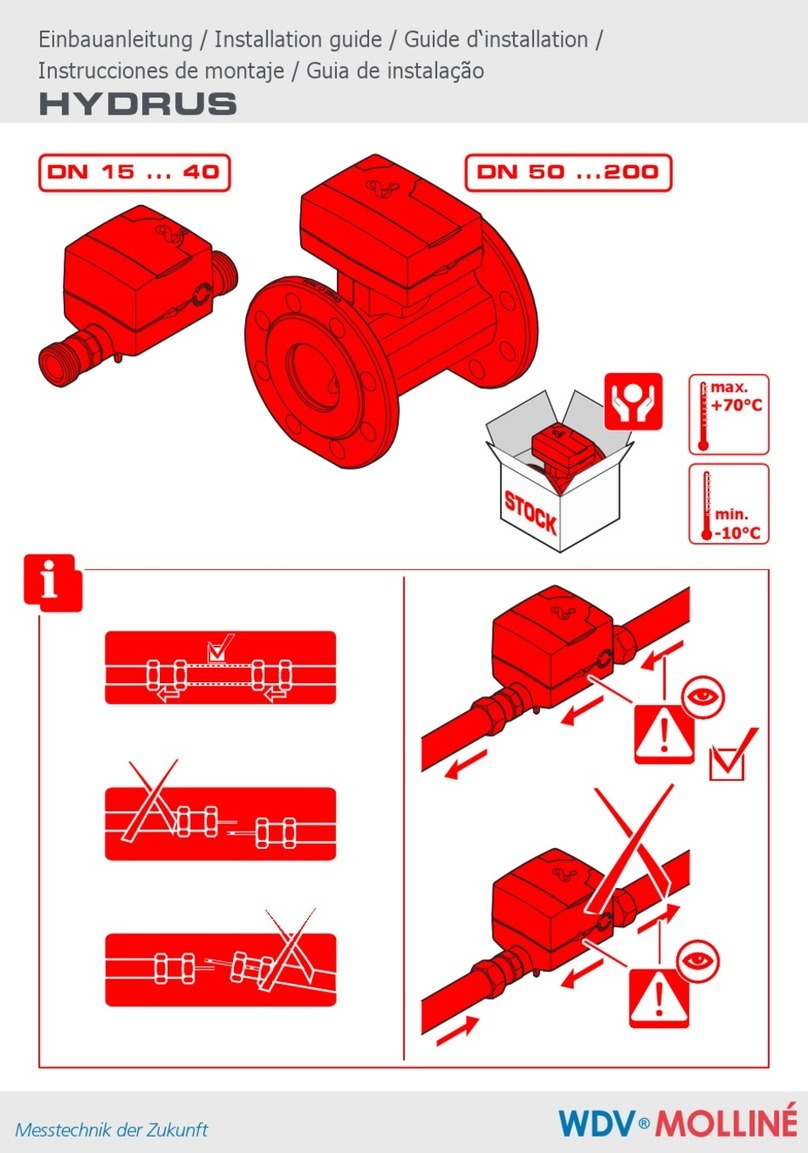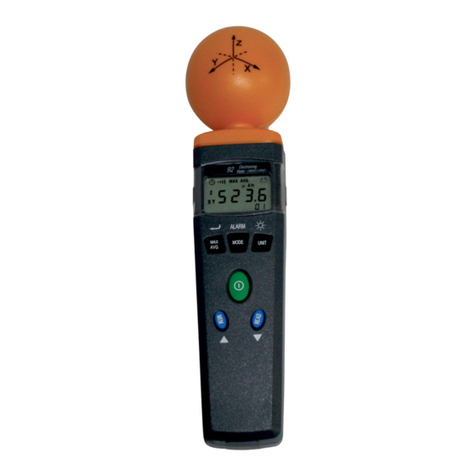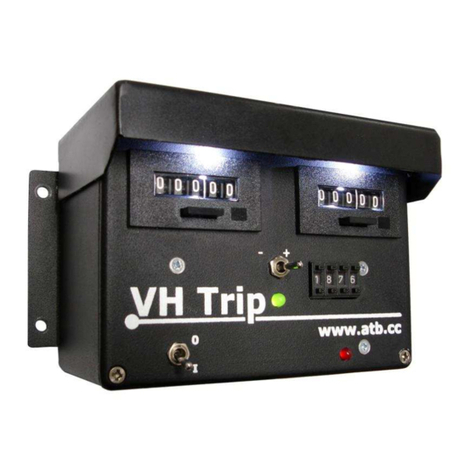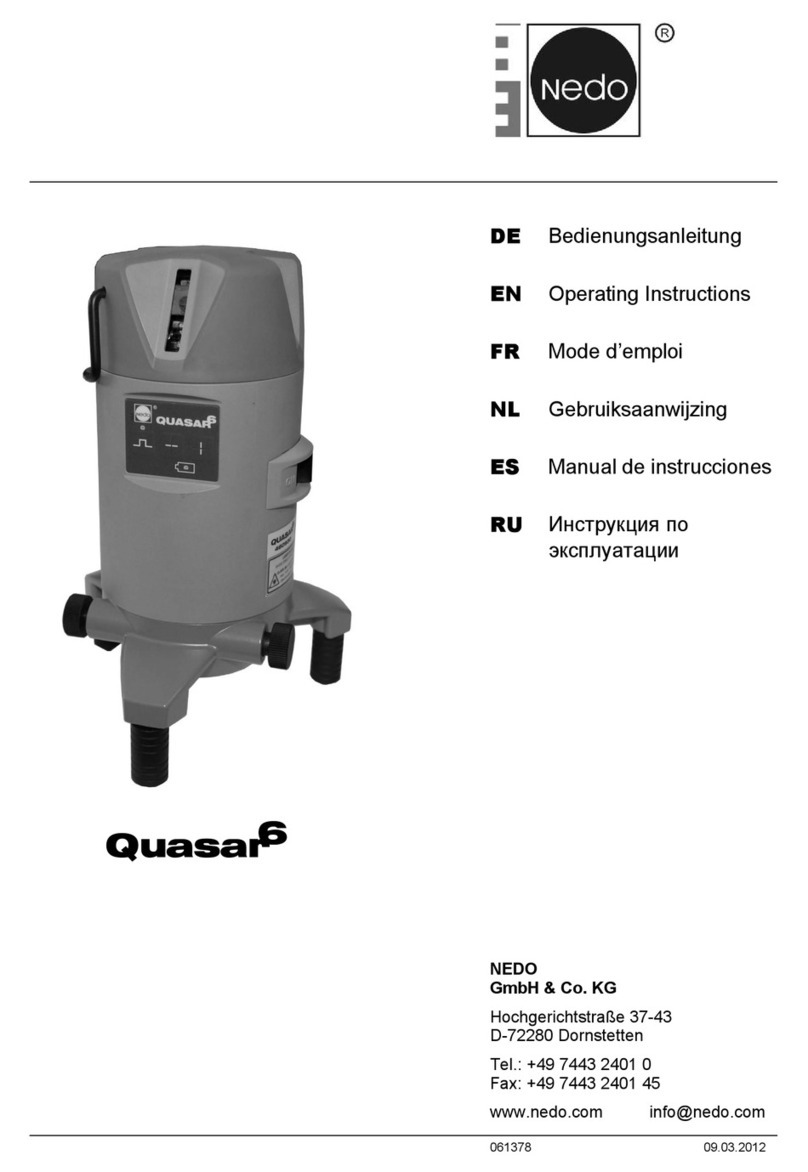Spectrex SafEye Xenon 700S User manual

This page intentionally left blank

Legal Notice
The SPECTREX SafEye Gas Detector described in this document is the property of Rosemount.
No part of the hardware, software or documentation may be reproduced, transmitted, transcribed, stored in
a retrieval system or translated into any language or computer language, in any form or by any means,
without prior written permission of Rosemount.
While great efforts have been made to assure the accuracy and clarity of this document, Rosemount
assumes no liability resulting from any omissions in this document, or from misuse of the information
obtained herein. The information in this document has been carefully checked and is believed to be entirely
reliable with all of the necessary information included. Rosemount reserves the right to make changes to any
products described herein to improve reliability, function, or design, and reserves the right to revise this
document and make changes from time to time in content hereof with no obligation to notify any persons of
revisions or changes. Rosemount does not assume any liability arising out of the application or any use of
any product or circuit described herein; neither does it convey license under its patent rights or the rights of
others.
Warning: This manual should be read carefully by all individuals
who have or will have responsibility for using, maintaining or
servicing the product.
The detector is not field-repairable due to the meticulous
alignment and calibration of the sensors and the respective
circuits. Do not attempt to modify or repair the internal circuits
or change their settings, as this will impair the system's
performance and void the SPECTREX product warranty.

Release History
Rev
Date
Revision History
Prepared by
Approved by
1
June 2011
First Release
Ian Buchanan
Eric Zinn
2
August 2013
Second Release
Ian Buchanan
Eric Zinn
3
January 2014
Third Release
Ian Buchanan
Eric Zinn
4
April 2017
Fourth Release
Jay Cooley
Shaul Serero

Table of Contents
Xenon 700S Open-Path Gas Detection System ................................................. i
Legal Notice....................................................................................................iii
Release History ...............................................................................................iv
About this Guide.............................................................................................13
Abbreviations and Acronyms ............................................................................14
1Scope....................................................................................................... 15
1.1 Product Overview..................................................................................15
2Technical Description .............................................................................. 17
2.1 Features ..............................................................................................17
2.2 Applications..........................................................................................18
2.3 Principles of Operation...........................................................................18
2.3.1 Definitions of Terms ........................................................................18
2.3.2 Spectral Finger Print........................................................................19
2.3.3 Optical Path ...................................................................................19
2.3.4 Microprocessor Based ......................................................................19
2.3.5 Gas Sensitivity ...............................................................................19
2.3.6 Gas and Mixture Selection and Setting...............................................20
2.3.7 Flash Source ..................................................................................20
2.3.8 Heated Optics.................................................................................21
2.3.9 HART Protocol ................................................................................21
2.3.10 Modbus RS-485 ..............................................................................21
2.3.11 Tilt Mount ......................................................................................22
2.4 Product Marking....................................................................................22
2.5 Models and Types .................................................................................22
2.6 Description...........................................................................................25
2.6.1 Flash Source Unit............................................................................25

2.6.2 Detector Unit..................................................................................27
3Operating Modes...................................................................................... 29
3.1 Operational Modes ................................................................................29
3.1.1 Normal Mode..................................................................................29
3.1.2 Maintenance Call Mode (3mA Output)................................................30
3.1.3 Fault Mode .....................................................................................30
3.1.4 Zero Calibration Mode (1mA Output) .................................................30
3.2 Output Signals......................................................................................31
3.2.1 Standard 0–20mA Current Output.....................................................31
3.2.2 Dry Contact Relays .........................................................................32
3.2.3 RS-485 Interface ............................................................................32
3.3 System Setup.......................................................................................33
3.3.1 Detection Function Programming ......................................................33
3.3.2 Detection Setup Function .................................................................33
3.3.3 Default Detector Setup ....................................................................35
4Technical Specifications........................................................................... 37
4.1 General Specifications ...........................................................................37
4.2Electrical Specifications..........................................................................38
4.2.1 Power Consumption ........................................................................38
4.2.2 Electrical Input Protection ................................................................38
4.2.3 Electrical Interface ..........................................................................38
4.2.4 Electrical Outputs............................................................................39
4.3 Mechanical Specifications .......................................................................40
4.4 Environmental Specifications ..................................................................41
4.4.1 High Temperature ...........................................................................41
4.4.2 Low Temperature............................................................................41
4.4.3 Humidity........................................................................................41

4.4.4 Salt and Fog...................................................................................41
4.4.5 Water and Dust ..............................................................................41
4.4.6 Shock and Vibration ........................................................................42
4.4.7 Electromagnetic Compatibility (EMC):................................................42
5Installation Instructions.......................................................................... 43
5.1 Introduction .........................................................................................43
5.2 General Considerations ..........................................................................43
5.2.1 Personnel.......................................................................................43
5.2.2 Tools Required................................................................................44
5.2.3 Site Requirements ..........................................................................44
5.2.4 The Source and Detector .................................................................44
5.2.5 Tips for Selecting a Gas Detector Location .........................................45
5.3 Preparations for Installation ...................................................................45
5.3.1 Preparing for Installation .................................................................46
5.4 Conduit/Cable Installation ......................................................................46
5.5 Detector/Source Mounting......................................................................46
5.5.1 Tilt Kit ...........................................................................................47
5.5.2 Detector/Source Installation.............................................................47
5.6 Detector Wiring ....................................................................................48
5.7 Detector Terminal Wiring .......................................................................52
5.8 Flash Source Wiring...............................................................................53
5.8.1 Wiring ...........................................................................................53
5.8.2 Terminal Wiring ..............................................................................53
6Operating Instructions ............................................................................ 55
6.1 SafEye Operation ..................................................................................55
6.2 Alignment of Unit ..................................................................................55
6.3 Powering Up the System ........................................................................57

6.4 Safety Precautions ................................................................................57
6.5 Signal Verification .................................................................................57
6.5.1 Signal Values Limitation...................................................................58
6.6 Zero Calibration....................................................................................58
6.7 Functional Check...................................................................................60
7Maintenance Instructions ........................................................................ 61
7.1 General Maintenance .............................................................................61
7.2 Periodic Maintenance.............................................................................61
7.2.1 Routine Optical Surface Cleaning ......................................................62
7.2.2 Signal Verification ...........................................................................62
7.2.3 Functional Check of Unit ..................................................................62
8Troubleshooting ...................................................................................... 63
8.1 Troubleshooting Problems ......................................................................63
Appendix A: Wire Selection Tables ........................................................... 65
A.1 General Instructions for Electrical Wiring..................................................65
Appendix B: Wiring Option Configurations................................................ 67
B.1 RS-485 Communications Network ...........................................................71
Appendix C: Accessories........................................................................... 73
C.1 Tilt Mount ............................................................................................73
C.2 Pole Mount (U-Bolt 4–5”) .......................................................................73
C.3 Pole Mount (U-Bolt 2–3”) .......................................................................73
C.4 Wall Mount...........................................................................................73
C.5 HART Handheld Diagnostic Unit ..............................................................74
C.6 USB/RS-485 Harness Converter Kit .........................................................74
C.7 Commissioning Kit ................................................................................74
C.8 Weather Cover for the Source Unit ..........................................................74
C.9 Weather Cover for the Detector Unit........................................................74

C.10 Mini Laptop Kit .....................................................................................75
Appendix D: SIL-2 Features ...................................................................... 77
D.1 Safety Relevant Parameters ...................................................................77
D.2 Guidelines for Configuration, Installation, Operation, and Maintenance ........77
D.2.1 Conditions for Safe Operation...........................................................77
D.2.2 Alarm Operation Using the 0–20mA Signal Current .............................78
D.2.3 Relay Outputs ................................................................................78
D.3 Miscellaneous .......................................................................................78
Technical Support...........................................................................................80

List of Figures
Figure 1: Wiring Options ....................................................................................24
Figure 2: Flash Source Unit ................................................................................26
Figure 3: Detector Unit ......................................................................................28
Figure 4: Tilt Mount...........................................................................................49
Figure 5: Detector and Tilt Mount Assembly..........................................................50
Figure 6: Detector with Cover Removed ...............................................................51
Figure 7: Source with Cover Removed .................................................................54
Figure 8: Magnetic Mode Selector........................................................................59
Figure 9: Wiring Option 1 ...................................................................................67
Figure 10: Wiring Option 2 .................................................................................68
Figure 11: Wiring Option 3 (Default)....................................................................69
Figure 12: 0–20mA Wiring (Sink) For Wiring Options 1 and 3 .................................69
Figure 13: 0–20mA Wiring (Source) For Wiring Options 1 and 3..............................70
Figure 14: 0–20mA 3 Wire Connection for Options 1 and 3.....................................70
Figure 15: RS-485 Networking for Wiring Option 3 ................................................71

List of Tables
Table 1: Gas Concentrations Measurement Terms .................................................18
Table 2: Gas Calibrations ...................................................................................20
Table 3: Model Numbers and Installation Distances ...............................................22
Table 4: Detector Types.....................................................................................27
Table 5: Standard (Default) 0–20mA Current for the Gas Channel...........................31
Table 6: Optional - Discrete Reading of 0–20mA at Different Detector Modes............32
Table 7: Sensitivity Levels Options ......................................................................34
Table 8: Other Functions ....................................................................................34
Table 9: Detector Default Setup ..........................................................................35
Table 10: Source Default Setup ..........................................................................36
Table 11: Detection Distance Range ....................................................................37
Table 12: Detector and Source Maximum Power Consumption ................................38
Table 13: Dry Contact Relays..............................................................................39
Table 14: Tilt Mount Kit......................................................................................47
Table 15: Tilt Mount Description..........................................................................49
Table 16: Detector and Tilt Mount Assembly Description ........................................50
Table 17: Detector with Cover Removed Description..............................................51
Table 18: Wiring Options....................................................................................52
Table 19: Source with Cover Removed Description ................................................54
Table 20: Maintenance Channels Limited Values....................................................58
Table 21: Troubleshooting Problems ....................................................................63
Table 22: Maximum DC Resistance at 68˚F/20˚C for Copper Wire...........................65
Table 23: Wiring Length in Feet/Meters................................................................66


TM 799200 Rev. (4), April 2017
13
About this Guide
This manual describes the SafEyeTM Xenon 700S Gas Detection System and
its features and provides instructions on how to install, operate, and
maintain the detector.
This guide includes the following chapters and appendices:
Chapter 1, Scope, provides a general introduction and overview of the
product and the guide, with a brief description of its content.
Chapter 2, Technical Description, describes the detector’s theory of
operation.
Chapter 3, Operation Mode, describes the detector’s operation modes,
user interface, and indications.
Chapter 4, Technical Specifications, describes the detector’s
electrical, mechanical, and environmental specifications.
Chapter 5, Installation Instructions, describes how to install the
detector, including wiring and mode settings.
Chapter 6, Operating Instructions, describes the operating
instructions and power up procedures.
Chapter 7, Maintenance Instructions, describes the maintenance and
support procedures.
Chapter 8, Troubleshooting, describes the solutions to problems that
may arise with the detector.
Appendix A, Wiring Selection Tables, describes the electrical wire
selection according to the installation configuration.
Appendix B, Wiring Option Configurations, provides wiring diagrams
for installation.
Appendix C, Special Conditions for Compliance with SIL-2
Requirements, describes the special conditions for compliance with the
SIL-2 requirements.

14
SafEyeTM Xenon 700S Gas Detector User Guide
Abbreviations and Acronyms
Abbreviation
Meaning
AWG
American Wire Gauge
BIT
Built In Test
EMC
Electromagnetic Compatibility
EOL
End of Line
FOV
Field of View
HART
Highway Addressable Remote Transducer-
communication protocol
IAD
Immune at Any Distance
IECEx
International Electrotechnical Commission Explosion
IPA
Isopropyl Alcohol
IR
Infrared
JP5
Jet Fuel
Latched
Refers to relays remaining in the ON state even after
the ON condition has been removed
LED
Light Emitting Diode
LPG
Liquefied Petroleum Gas
mA
Milliamps (0.001 amps)
MODBUS
Master-slave messaging structure
N.C.
Normally Closed
N.O.
Normally Open
N/A
Not Applicable
NFPA
National Fire Protection Association
NPT
National Pipe Thread
SIL
Safety Integrity Level
UNC
Unified Coarse Thread
VAC
Volts Alternating Current

TM 799200 Rev. (4), April 2017
15
1Scope
In this chapter…
Product Overview
page 15
Product Overview1.1
The SafEye Xenon IR Open-Path Gas Detector 700S employs an advanced
Xenon Flash Source and integrated electronics package, both of which are
housed in improved, low-profile, stainless steel housings, which provide high
quality and performance, fast response, and line-of-sight gas monitoring.
The complete SafEye system is backed by a 3-year warranty, and the Xenon
Flash source bulb has a 10-year warranty.
The SafEye Xenon detects ambient combustible gases over a path length of
up to 459ft/140m, even in harsh environments where dust, fog, rain, snow,
or vibration can cause a high reduction of signal. Due to its unique
combination of triple optics, dual-spectrum reference sensor, and heated
optics, the SafEye Xenon can maintain operation in up to 90% signal
obscuration and ±1 degree of misalignment.
The SafEye Xenon is manufactured only from stainless steel, with a heated
optical window to improve performance in ice, snow, and condensation
conditions. The programmable functions are available through an RS-485
port used with host software supplied by SPECTREX, and a standard PC or
an I.S. handheld unit.
The SafEye Source and Detector unit enclosures are IECEx certified Exd
flameproof with an integral segregated rear, an Exe terminal compartment,
which avoids exposure of the sensors and electronics to surrounding
environment, and an internal Exia intrinsically safe circuit power for heating
the window. The detector also has a plug interface for connection to a
handheld PC, which meets intrinsically safe standards. Hence the combined
approval of Ex d e ia [ia Ga] IIC T5 Gb.
This manual provides a full description of the detector and its features. It
includes instructions on the installation, operation, and maintenance of the
detector.
To use the host software with the harness USB RS-485 converter to
change the required functions, and for a description of its maintenance,
please refer to Manual TM 899050 for instructions.
To use the Non I.S. Mini Laptop Unit, refer to Manual TM777070 for
instructions.
To use the HART Protocol to change the required functions and for a
description of its maintenance, please refer to Manual TM 899030.


TM 799200 Rev. (4), April 2017
17
2Technical Description
In this chapter…
Features
page 17
Applications
page 18
Principles of Operation
page 18
Product Marking
page 22
Models and Types
page 22
Description
page 25
Features2.1
Long range gas detection up to 459ft/140m
Simultaneous detection of C1–C8 flammable gases
High sensitivity and fast response to hydrocarbon gases
Heated optics to improve performance in ice, condensation, and snow
conditions
Continuous operation in extreme or harsh environmental conditions
Solar blind and immune to industrial environments
Withstands extreme vibrations
Interfaces with most commonly used control panels
Standard 0–20mA and dry contact relay outputs
HART Protocol: Communication Protocol (see HART Protocol, page 21)
RS-485 Output Modbus compatible for PC Communications Network for a
maximum of 247 systems
Simple one-person installation, alignment, and calibration
IECEx approved per Ex d e ia [ia Ga] IIC T5 Gb
TUV approved per SIL-2 requirements
Programmable configuration via the handheld unit
Fast connection to I.S. approved handheld diagnostic/calibration unit
New operation mode (3mA) “maintenance call”
A 3-year warranty for the complete SafEye system
A 10-year warranty for the Xenon Flash bulb

Principles of Operation
18
SafEyeTM Xenon 700S Gas Detector User Guide
Applications2.2
The SafEye Xenon system may be used to monitor flammable gas
concentration in various applications, such as:
Petrochemical, pharmaceutical, and other chemical storage and
production areas
Flammable and toxic chemical storage sites, and hazardous waste
disposal areas
Refineries, oil platforms, pipelines, refueling stations, and fuel storage
facilities
Hazardous loading docks, transportation depots, and shipping
warehouses
Engine rooms
Compressor and pumping stations
Test cells
LNG-LPG Systems
Offshore Floating Production Storage and Shipping vessels (FPSO), and
fixed oil rigs
Principles of Operation2.3
The SafEye Xenon system detects gases through dual-spectral range
monitoring, analyzing the absorption of radiation caused by gases in the
atmosphere, and comparing the ratio to background atmospheric
absorption.
2.3.1 Definitions of Terms
The following list defines the gas concentration measurement terms that are
used in this manual.
Table 1: Gas Concentrations Measurement Terms
Term
Description
LEL
Lower Explosive Limit: The minimum concentration of a
substance (gas/vapor) in air mixture that can be ignited.
This mixture is different for every gas/vapor, measured in
% of LEL.
LEL.m
Integral of Concentration in LEL units (1 LEL = 100% LEL)
and the operation distance in meters (m).

Principles of Operation
TM 799200 Rev. (4), April 2017
19
2.3.2 Spectral Finger Print
Each hazardous material is detected at a specific wavelength selected
according to its specific spectral absorption or “finger print.”There are 3 IR
sensors: 2 signals and 1 reference. The detection process involves 2
separate filters, one transmitting radiation that is absorbed by a particular
gas, and one that is not sensitive to it.
2.3.3 Optical Path
The presence of hazardous airborne vapors, gases, or aerosols in a
monitored area is detected when the defined substance crosses/enters the
optical path between the radiation source unit and the detector.
Hazardous gases/vapors present in the atmosphere cause absorption of the
radiation pulse at specific wavelengths in the optical path between the
radiating source and the detector unit. This causes a change in the signal
intensity received by the detector, which is translated into an output related
to the detector’s measuring scale.
The system analyzes the defined open path at the spectral bands specific to
the materials being monitored. The Automatic Gain Control (AGC) unit
compensates for environmental disturbances such as fog and rain, through a
constant comparison with its dual spectral beam.
2.3.4 Microprocessor Based
The incoming signals are analyzed by the built-in microprocessor.
A sophisticated mathematical algorithm calculates between the various
functions of the detected signal thresholds. Statistics, ratio algorithms, data
communications, diagnostics, and other functions are performed.
2.3.5 Gas Sensitivity
The SafEye Xenon 700 Model uses wavelengths around the 3.4µ spectral
band to measure air flammability potential between the source and detector.
At this wavelength, all hydrocarbon materials have a strong absorption
peak. This peak enables the detector to achieve both regular sensitivity of
0–5 LEL.m and high sensitivity of 0–2 LEL.m, according to the function
setup. However, since the desired detection information is air flammability
and the actual measurement is radiation absorption around the 3.4μ
spectral band, the detector has different sensitivities to different gases or
gas combinations.
This difference in sensitivity is irrelevant if, in the protected area, the gas
composition is known. However, if in a protected area, the gas composition
can vary substantially, then the difference in sensitivity should be
considered in determining the detector calibration.

Principles of Operation
20
SafEyeTM Xenon 700S Gas Detector User Guide
2.3.6 Gas and Mixture Selection and Setting
At the 3.4µ spectral band of the SafEye Xenon 700, the least sensitive gas is
pure (100% volume) methane and the most sensitive gases are various
mixtures of methane with heavier alkanes, where the methane percentage
is less than 90%. For pure ethane, the sensitivity is close to the high
sensitivity gases, and for pure propane, it lies somewhere between the 2
extremes. Every SafEye has 4 built-in gas calibration settings that can be
changed by function setup. The setting for each SafEye is detailed on the
calibration datasheet provided with each unit.
The calibration settings are designed for use in various applications. Models
701, 702, and 703 are calibrated to 4 different gases as follows:
Table 2: Gas Calibrations
Gas Type
Description
Gas 1
Pure methane, and is for use in methane storage and piping
applications
Gas 2
92% methane, 4% propane and 4% ethane (default).
Universal oil and gas production mixture to be used in all
cases where methane concentration in the mixture does not
exceed 98%. It can also be used for pure ethane
applications.
Gas 3
LPG - 60% propane and 40% butane.
Gas 4
99% methane and 1% propane, and is for use in detecting a
methane mixture with heavier gases, where the methane
component can vary between 100% and 95%. It is also
good for protecting areas where a leak can be either pure
methane or pure propane.
Models 721, 722, and 723 are calibrated to 1 gas only Gas 1 –ethylene
100%.
The 4 internal gas calibrations cover most of the flammable gas detection
applications. Actual selections should be made by the user in consultation
with experts to provide for safety requirements. However, for special cases
where none of the 4 calibrations are appropriate, SPECTREX, through its
local agents, can advise how to calibrate a SafEye Detector to any specific
gas.
2.3.7 Flash Source
The Xenon Flash Source was originally introduced in the first SafEye
development and was designed to overcome false alarms, which were
experienced by early generations of the open path system. The new SafEye
Xenon 700S employs the latest generation of flash bulbs to provide even
more power and an extended operation life of up to 10 years.
Table of contents

